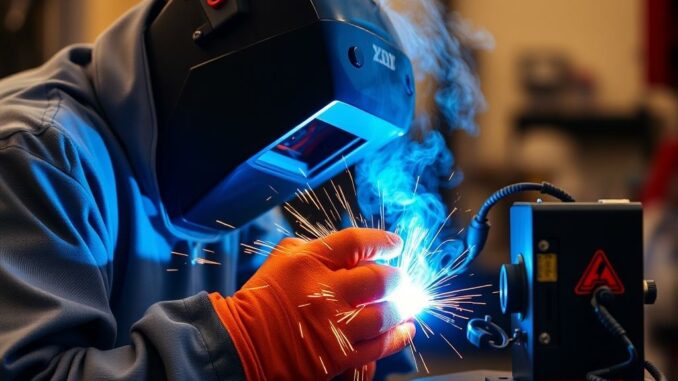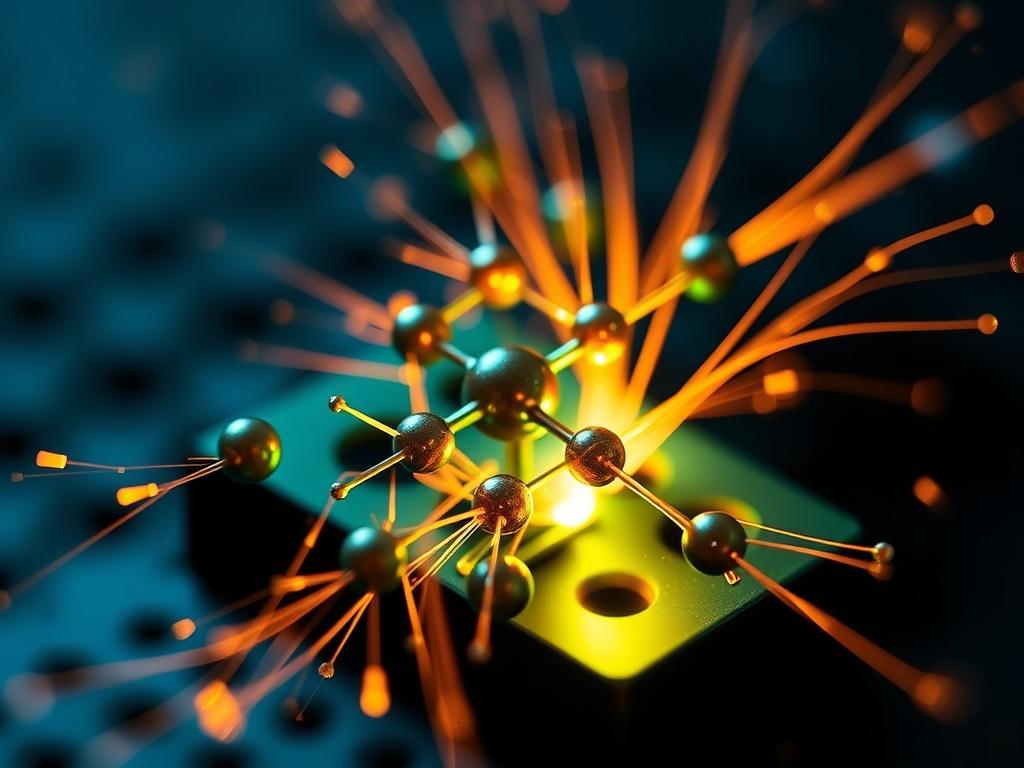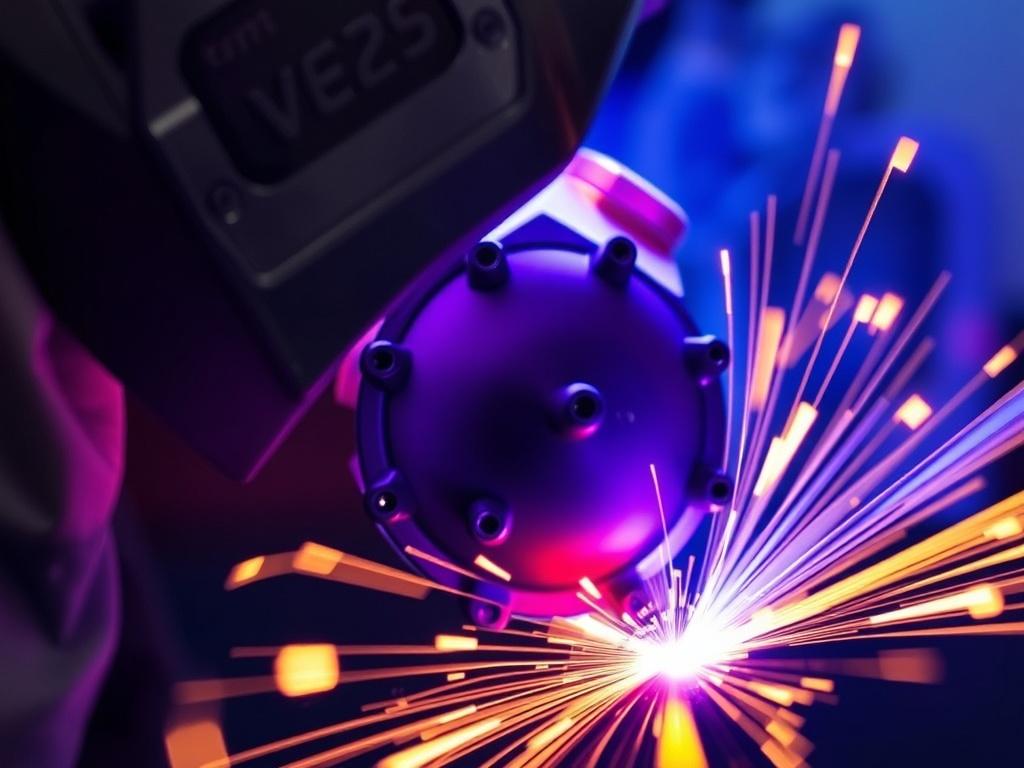
SQLITE NOT INSTALLED
Welding is a cornerstone of modern industry, responsible for everything from the creation of skyscrapers to the assembly of tiny electronics. It’s an art and science that has evolved over centuries, but today, it finds itself on the threshold of a radical transformation thanks to the powerful potential of nanotechnology. This convergence promises to revolutionize the welding process — making it faster, stronger, more precise, and even environmentally friendly. In this comprehensive article, we’ll explore the fascinating world of nanotechnology in welding, dissect the advances currently underway, and envision what the future holds for this incredible fusion of two groundbreaking fields.
Understanding Welding: The Basics
Before diving into the nanotechnological aspects, it’s essential to get a solid grasp on welding itself. At its core, welding is the process of joining two or more pieces of metal or thermoplastics through a combination of heat, pressure, or both. When executed correctly, a weld fuses materials at the molecular level, creating joints that are often as strong as the original pieces.
There are several common welding techniques:
- Arc Welding: Using an electric arc to generate intense heat that melts the base material and filler metal.
- Gas Welding: Employing a flame fueled by gases like acetylene for heating.
- Resistance Welding: Utilizing electrical resistance in metal pieces pressed together to produce heat.
- Laser Welding: A laser beam melts the material to join parts with high precision.
Each method has its own advantages and limitations, dependent on the materials involved, required strength, and application environment. Traditional welding methods have served industries well, but there are still significant challenges—such as microstructural defects, inconsistent joint quality, and limitations in welding complex or sensitive components—that drive research into innovative solutions.
What Is Nanotechnology?

To appreciate the impact of nanotechnology in welding, we must first understand what nanotechnology really means. Put simply, nanotechnology involves manipulating matter at the nanometer scale — between 1 and 100 nanometers. To put this into perspective, a human hair is about 80,000–100,000 nanometers wide. At such incredibly tiny scales, materials can behave very differently from bulk materials; they can exhibit enhanced strength, conductivity, or even novel properties like self-healing.
Scientists and engineers have learned to design and control structures at the nanoscale to create materials with customized properties. These new materials, often called nanomaterials, can be integrated into countless applications from medicine to electronics, and welding is rapidly rising as an exciting area of exploration for nanotech breakthroughs.
The Intersection of Nanotechnology and Welding
The merger of nanotechnology and welding offers remarkable possibilities by providing the ability to control the welding process and the resulting joint at an unprecedented scale. What was once reliant on trial and error can now be driven by molecular engineering and precise manipulation.
Here are some key ways nanotechnology is influencing welding:
- Nanoparticle-Enhanced Weld Filler Materials: Embedding nanoparticles into filler materials improves strength, toughness, and corrosion resistance.
- Nanoscale Surface Modification: Treating surfaces at the nanoscale before welding can reduce defects and improve bonding.
- Nanocoatings for Protection: Applying nanostructured coatings to welds enhances durability and prevents oxidation.
- Improved Heat Control: Nanomaterials can be used to better manage heat transfer during welding, reducing warping.
- Real-Time Nanosensors: Embedding nanosensors within the weld area allows real-time monitoring of weld quality and integrity.
This combination not only improves weld quality but also opens up the ability to weld new materials and create applications previously impossible with conventional technologies.
Nanoparticle-Enhanced Weld Filler Materials
One of the most active areas of research involves integrating nanoparticles such as carbon nanotubes, graphene, and metal oxide nanoparticles into welding filler materials. These additions give the filler enhanced mechanical properties and sometimes provide self-healing abilities when the weld joint is subjected to stress or damage.
For example, carbon nanotubes have exceptional tensile strength and conductivity, making them perfect candidates to reinforce filler metals. When properly dispersed, they can significantly increase the toughness of the weld without compromising flexibility.
Here’s a table that outlines common nanoparticles and their typical benefits when used in welding fillers:
| Nanoparticle Type | Key Property Improved | Common Application in Welding |
|---|---|---|
| Carbon Nanotubes | Tensile strength, electrical conductivity | Reinforcing filler metals for aerospace and automotive |
| Graphene | Corrosion resistance, thermal conductivity | Protective layers and heat dissipation in weld joints |
| Alumina Nanoparticles | Hardness, wear resistance | Tools and surfaces requiring resistance to abrasion |
| Silver Nanoparticles | Antimicrobial properties | Specialized welds in medical device manufacturing |
The proper selection and integration of nanoparticles can be tailored to the specific welding application, making the joint stronger and longer-lasting.
Nanoscale Surface Modification
Weld quality depends heavily on the cleanliness and microstructure of the surfaces being joined. Nanotechnology allows us to modify surfaces just prior to welding, reducing oxidation, impurities, and surface roughness at the atomic or molecular level.
Techniques such as plasma nano-texturing or nanostructured laser surface treatment can create surfaces with enhanced wettability. This means the weld filler flows better into the joint, creating fewer voids or weak spots. The result is a tighter bond with improved strength and reliability.
Imagine two rough stones being glued together—you might need extra glue and time to fill all the gaps. But if the stones were polished down to an ultrafine smooth or specially structured surface, the glue would bond more efficiently and evenly. Nanoscale surface modification works much the same way, streamlining the welding process.
Nanocoatings to Protect and Enhance Welds
After welding, joints are often exposed to harsh environmental conditions, whether it’s the corrosive chemicals in a factory, extreme temperatures on a jet engine, or exposure to moisture in marine environments. Traditional coatings can protect welds to some extent, but nanostructured coatings offer an advanced level of protection by forming dense layers that are much harder to penetrate.
Many nanocoatings also possess self-healing properties, where minor cracks or scratches can repair themselves, extending the lifetime of the welded structure. For instance, nanocomposites combining ceramics with polymers have been developed that resist wear and corrosion far better than conventional paints or sealants.
Additionally, nanocoatings can alter surface properties like friction or hydrophobicity (repelling water), allowing for more specialized applications, such as preventing ice buildup on airplane wings or reducing fouling in pipelines.
Managing Heat and Stress with Nanomaterials
One of the biggest challenges in welding is managing heat input and thermal stresses. Excessive heat can cause distortion, weaken metals, and create stresses that lead to premature failure of weld joints. Nanomaterials offer promising solutions to better control heat during welding.
By integrating nanofluids, which are liquids containing suspended nanoparticles, into cooling systems or even into gas flows around the weld, engineers can more effectively dissipate heat. This precise heat management ensures that the weld cools uniformly, reducing the risk of cracks and residual stresses.
Moreover, some nanomaterials can act as thermal barriers, shielding sensitive parts from excessive heat during the joining process. Their ability to conduct or block heat is being fine-tuned to provide optimal thermal management depending on the welding situation.
The Future of Welding with Embedded Nanosensors
Imagine being able to monitor the quality and integrity of a weld in real-time at the nanoscale, detecting microcracks or diffusion of elements before they become a problem. This is no longer science fiction. Nanosensors embedded directly into weld zones are becoming a reality.
These tiny sensors are capable of measuring temperature gradients, stress levels, and chemical compositions during and after the welding process. When hooked up to AI-powered monitoring systems, they provide instant feedback which can be used to adjust welding parameters on the fly—ensuring consistent high-quality joints.
Such smart welding techniques not only improve safety but reduce costly quality control inspections and repairs later down the line.
Real-World Applications and Innovations

The integration of nanotechnology into welding isn’t just academic—it’s powering game-changing innovations across various sectors:
Aerospace and Defense
In aerospace, the need for lightweight but strong materials is paramount. Nanoparticle-enhanced welds improve the durability of aircraft components, reduce weight, and increase fuel efficiency. Nanostructured protective coatings also help protect jet engines from corrosion and wear during flight.
Automotive Industry
Nanotechnology allows welding processes to support advanced lightweight alloys used in electric vehicles, making cars safer and more sustainable. The improved weld quality reduces the risk of failures and extends vehicle life.
Medical Device Manufacturing
Precision welding is crucial in manufacturing surgical and diagnostic tools. Embedded nanosensors ensure consistent quality control, while nanocoatings provide biocompatibility and resistance to sterilization processes.
Electronics and Semiconductors
Welding microscopic components demands extreme precision. Nanostructured fillers and nanosensors are helping achieve reliable joints at tiny scales, supporting the growth of flexible electronics and cutting-edge gadgets.
Energy Sector
Nanomaterial-enhanced welds are integral to constructing durable pipelines, wind turbines, and nuclear reactors. The resistance to corrosion and wear helps maintain integrity in extreme conditions, minimizing downtime and repair costs.
Challenges and Considerations
While the prospects of nanotechnology in welding are impressive, there are hurdles to overcome before widespread industrial adoption occurs:
- Cost and Scalability: Producing nanomaterials and integrating them into welding processes can be expensive. Scaling up for mass production remains a challenge.
- Safety Concerns: Handling nanoparticles requires stringent safety protocols due to unknown or harmful health effects if inhaled or ingested.
- Material Compatibility: Nanoparticles must be carefully matched with the base metals to avoid unintended effects like brittleness or contamination.
- Regulatory and Quality Standards: Industries will need clear standards to certify nanotechnology-enhanced welds, especially in critical fields like aerospace or medicine.
Despite these challenges, ongoing research and pilot programs are making steady progress to overcome these barriers, and many experts anticipate nanotech-enabled welding will become a mainstream technology over the next decade.
Conclusion: What’s Possible with Nanotechnology in Welding?
The fusion of nanotechnology and welding is ushering in a new era of manufacturing that promises stronger, lighter, and more reliable metal joints with unparalleled precision and control. From nanoparticles that reinforce weld fillers to nanosensors enabling real-time monitoring, the possibilities are vast and exciting.
As we continue to unlock the nanoscale mysteries of materials and their interactions, welders and engineers will be empowered with innovative tools and techniques that were once unimaginable. Whether in aerospace, medical devices, automotive, or cutting-edge electronics, the advancements fueled by nanotechnology will redefine what’s possible in welding—making structures safer, longer-lasting, and more advanced than ever before.
If you are intrigued by how tiny particles are reshaping huge industries, now is the perfect time to watch the remarkable evolution unfold in the world of welding powered by nanotechnology.
